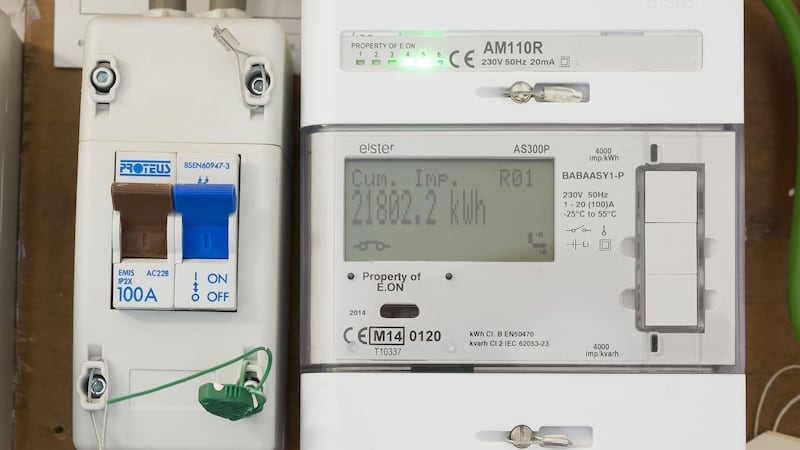When it comes to tackling rising energy costs, we’re all looking for a lightbulb moment. Cannier people have started to generate their own electricity, a new grow-your-own movement that is gathering momentum.
The Department of the Environment, Climate and Communication has announced that from this year you will be able to sell electricity back to the grid, so is now the time to get your house in order with your own green power source?
You could install a windmill or wind turbine, or, if you happen to have a fast-flowing river, weir or falls on your property then you might be able to make use of a micro-hydropower system, or a wind and solar combination. But the easiest, most affordable and least disruptive way to do dip your toe into green electricity generation is through the use of photovoltaic or PV panels.
Panels
“Anyone with PV on their roof is already generating their own electricity,” says Gerhard Heyl, a director at My Solar, whose installation wing HSLC, trading as PV Green, is one of several specialists in this area and is listed on the Sustainable Energy Authority of Ireland (SEAI) website as a registered installer.
Installation is relatively easy but there are several considerations. Until selling to the grid is available, the PV system operates on a “use it or lose it” basis. That is unless you also invest in battery storage.
To get the most from your investment you need to understand your energy consumption and how to better utilise the electricity that PV panels generate when it is generated.
Take the example of a simple PV panel system in a house that generates 2,000 kWh (kilowatt hours) a year and in which the typical household consumption starts from 1,000kWh a year. This means that while 1,000 kWh will come off the billpayer’s annual cost of electricity, the other 1,000 kWh is, for now, squandered – in that it is sent back to the grid. You are, in effect, giving away energy that you have paid to generate.
Diverter
If you add a diverter to this simple PV panel set-up you will be able to generate hot water for showers and other uses from the PV panels. In this example, this will allow your home to consume up to about 1,500 kWh of the aforementioned 2,000, Heyl says.
But this means you’re still not getting anything for the remaining 500 units generated. They go back to the grid – something you are currently not remunerated for. This will change, but to make the most of any PV panel investment, understanding usage patterns is essential.
To do this you need to install a monitoring device that shows how your household consumes electricity and where to make cuts. About 90 per cent of PV systems already come with such a device, Heyl says, but to sell excess back to the grid you will need to invest in a smart metre, which is supplied by ESB Networks.
Any device with a cycle and a timer, like a washing machine or a dishwasher, can be programmed by using a smart plug and an app on your phone to come on at high generation times, that is during daylight hours.
But high generation times differ to high-energy consumption periods. In most households the latter takes place during the evening time, not during the day. To store the energy generated for use after dark or at another time, you will need to invest in a battery as well as PV panels.

According to a spokesman for the EBS, there are about 22,000 residential microgeneration customers in the country and the vast majority have installed solar PV panels.
ESB Networks launched a pilot retrofitting project on the Dingle peninsula in 2018 that includes heat pump technologies and the installation of PV panels to study the impact the PV panels on residential homes will have on the network.
“It’s to see if they can cause voltage problems,” explains project manager Fergal Egan.
Voltage problems are the reason you need to inform ESB Networks when you install panels. This is the job of the installer and homeowners should ask for a copy of the documentation.
Depending on the surface area that they occupy, you may also need to get planning permission. Currently, you can put up to 12sq m of panels on your roof without having to apply for permission.
Shading
Shading is another consideration, says Eoin Ahern, energy manager at the City of Dublin Energy Management Agency.
“It can be caused by trees or even buildings. If a small part of the panel is shaded it can significantly reduce power generation. A physical site visit is essential to determine any shading considerations,” he says.
One of the Dingle peninsula households selected for the pilot project was that of schoolteacher and mother Carol Leahy, whose electricity bills were about €260 a month a year ago – when all her six daughters were living at home during lockdown.
A very simple move – a provider switch – dropped the cost by 40 per cent, a phenomenal reduction. She also switched from day to day and night rates, with her day rates costing 15 cents and her night rate almost half that at about 8 cents.
But what really drew her attention to her usage was the app that ESB Networks had created and which she downloaded to her phone.
“I get notifications the minute the sun hits the panels. It tells you when the energy is at its strongest. This is when I turn on the washing machine and if it’s not being used it reroutes it to the battery,” she explains. The app also tells her which appliances use the most electricity. The oven and electric hob are heavy users. So is the kettle.
“Switch the kettle and toaster on at the same time and the results are off the scale,” she says.
While she is delighted with the results, it is worth noting that energy from a panel-only system is mostly generated between the months of May through September, tailing off to less solar irridation in the winter months, Egan explains. There is still some energy generated but you will have less excess power, says Heyl.
In addition to panels, Leahy also has battery storage. The battery costs about €6,000, says Egan.
Being able to generate electricity, and sell excess to the grid, is something a large section of society wants to buy into. But there are affordability questions around the big move to decarbonisation for homeowners, says Dr Matt Kennedy, associate director of carbon and climate at engineering Arup, a company that has done a lot of research into the subject.
“We’re being pushed towards electrification. While the cost of PV panels has come down significantly, the storage solutions remain quite expensive.”
Cost
You can get a very good PV panel system from about €7,200, without the SEAI grant, that is a panel and hot water option, at a cost of €60 per week for 10 years. You can pay for this upfront or on a monthly basis, as offered by some providers such as MySolar. This is where the installation process gets more complicated, Reyl explains.
“There is no point in putting a tiny battery into a large PV array. The safest thing to say is that a battery system needs to be custom designed to the homeowner’s consumption needs. The price range can vary from €4,000 all the way up to €20,000.”
There are grants available through the SEAI to encourage a move to PV panel use but these come with some caveats. Homeowners of second-hand houses should know that in order for any PV panel purchase to qualify for a SEAI grant the property has to have been constructed before 2011. Once installed, the building energy rating (BER) also needs to become an A, B or C rating to qualify. This will require you having a BER accessor visit your home pre-fitting, another outlay to factor in, if you don’t already know the BER of your home.
The current SEAI residential PV grant system doesn’t work for everyone, says Heyl.
“For those that don’t qualify it is still worth doing because you will be generating power for 25 plus years. It just works out a little bit dearer.”
The grant system also only caters to homeowners. Without their landlord’s say, renters can’t install the panels on their roof.
For those already generating excess electricity, anything you “spill”, that is you don’t use, goes back to the grid, says Ahern. “For now you don’t get paid for this.”
“That’s why a feeding tariff, a rate that pays you for the electricity you are already sending to the grid, is needed,” Heyl says.
“It allows for a simple PV panel installation where you sell excess back to the grid. It’s about giving people the power.”
In Dingle the test case homes have been “spilling” an average of 20 kWh, or 20 units of electricity per week, which amounts to about €4 per week, Ahern says, working on the assumption that a unit of electricity costs 20 cents.
Over a year, that amounts to a rebate of about €208, which doesn’t seem like a lot. However, experts say the selling to the grid rate will be far less and more likely to be in the region of 5 or 6 cents per unit. This amounts to rebates of €41.60-€52. It hardly seems worth the investment, especially if you have to take out a loan or remortgage the house to do so.
But to get a clearer picture of the pros and cons you need to factor in the energy utilised versus the costs outlaid. By giving the capital outlay further consideration, a PV system that costs €7,200 and conforms to the SEAI grant criteria will give a rebate of €1,800, which reduces the overall capital outlay to €5,400.
If you use an average 2,000 kWh pa then you will have paid off the investment in 13.5 years. But most panels have a 25-year lifespan, so the upside is that homeowners can get up to 11.5 years of electricity generation free.
These costs don’t include a hot water diverter or battery storage but taking a long-term view there is a cost advantage, that is, if you can afford to pay for the works in the first place.



















